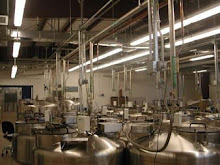Regarding the correct procedures for shipping, handling and labeling of cryogenic vapor shippers, several concerns have been raised. UPS and FedEx disagree between themselves as to what could be properly shipped and what could not be, regionally. We went straight to IATA for answers due to this disagreement. The letter draft by the TSA (Transportation Security Administration) is given below.
This is concerning the applicability of the Federal Hazardous Material Regulations to the shipment of refrigerated samples in the “Dry Shipper” container.
A “Dry Shipper” package consists of an outer container that is lined with an absorbent material. The container is charged with nitrogen-refrigerated liquid, which is absorbed into the container lining. The charged, completed package serves as a refrigerated container for the shipment of samples.
Because of the manner in which it is absorbed and because there is no free liquid present in the packaging, the liquid nitrogen does not exhibit the characteristics of a “cryogenic liquid” as defined in 49 CFR 173.115 (g) and does not pose a hazard in transportation. Therefore, it is not subject to regulation under the Department of Transportation’s Hazardous Materials Regulations.
However, if the packaging is improperly offered for transportation WITH free liquid present, it would be subject to regulation when offered for transportation by air (see 49 CFR 173.320) and must be offered in accordance with the International Civil Aviation Organization’s (ICAO) Technical Instruction. Note the packaging does not conform to ICAO Packaging Instruction 202 and therefore, is not an authorized packaging when containing free liquid.
In consideration of the above, consultation with the Research and Special Programs Administration of the DOT has determined that the use of nitrogen refrigerated liquid charged “dry shipper” containers for the shipment of samples falls within the regulation exception provided in 49 CFR 173.30 paragraph (a) of the section states the requirements of this subchapter do not apply to atmospheric gases and helium when used in the operation of the process system, such as a refrigeration system. Paragraph (c) of 173.320 pertains to air transport of same refrigeration system. For exception status of air shipments please refer to IATA-Dangerous Goods Regulations for nitrogen-refrigerated liquid. This falls in the class of 2.2 non-flammable gas, packing instructions 202 with special provisions A-800. For answers to questions regarding shipping regulations contact a Chart/MVE, Bio-Medical Technical Service Representative.
Once the LN2 is absorbed into the vapor shipper it cannot be reliquaries, so LN2 in an absorbed state is not considered a hazardous material. With that being said, the container should not bear the liquid nitrogen label.
Although it is not required that vapor shipper dewars be shipped in the plastic shipping container it is highly recommended to reduce the possibilities of damage or tipping.
It is also important to remember that even armed with all the letters, proper identification and shipping regulations; the pilot has the last say whether a vapor shipper is loaded onto his aircraft.

No comments:
Post a Comment